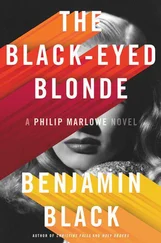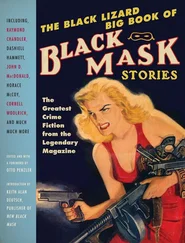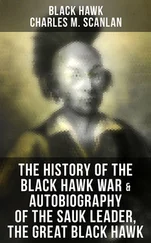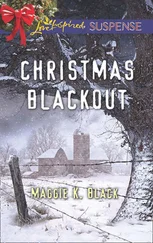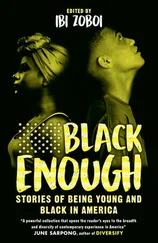First, White Eagle had stonewalled her, and now he was unavailable.
His story about Max and the sensory deprivation tank made no sense. In Tess’s interactions with powerful people—and that included the second-in-command of a New Mexico drug cartel and a corrupt mayor—this was not at all unusual. She’d seen it many times. The tactic was almost universal among high-octane public figures—men, mostly—who felt they could get away with it precisely because they were wealthy and powerful. The object was simple: stick to the lie, no matter how ridiculous it sounded. Tess never ceased to be amazed by the sheer audacity of it. These guys seriously thought if they just stuck to their stories, they could get away with anything. And many times, they did. It didn’t surprise her that Gordon White Eagle had tried it on her; she would have been surprised if he hadn’t.
One thing was clear: the guru of the Desert Oasis Healing Center didn’t know what had happened to Max Conroy, but he assumed Max was dead.
Why would he think that?
She called Pat. “I know we won’t release the names of the victims until next of kin are notified, but I’d like to make sure no information leaks out in the next few hours. OK?”
“You think I’m a rookie?”
“No.”
“Then don’t ask me crap like that. We’re not releasing the names until the last dog dies. And one of those dogs is not answering his phone.”
“Good. I need to go to Sedona.”
“Sedona? Now?”
“It’s a lead.”
He gave her the silent treatment. She was pissing off a lot of people today. “It’s a lead, Pat.”
“Bonny know this?” Pat growled.
“No, I’m going to call him now.”
“And I get to do the dirty work.”
“Are the bodies gone?”
“On their way to Phoenix as we speak. But I’m going to be here a long time. I thought you would be joining me—it’s a real joyride, Detective .”
Pat had always been good at making her feel guilty. “I’ll get back to you when I know what’s up,” she said.
She knocked on Bonny’s open door. He looked up. “Something up, Detective?”
She told him about her conversation with Gordon White Eagle.
“He sounds slippery. But is that any reason to suspect him of anything?”
“I don’t know, sir. I think it’s important, though.”
Bonny sighed. “Pat’s gonna give me fits over this. Still, if it’s a lead, you’d better follow it.”

WHEN BAJADA COUNTY sheriff’s deputy Luke Jump cleared his throat, Pat Kerney looked up. He was still down in the bomb shelter, trying unsuccessfully to negotiate his way around all the blood. His blue booties were turning purple.
“Yeah? What?” Pat asked.
“We went through the guesthouse.”
“And?” Luke Jump talked slower than anyone he’d ever met. “Anything interesting?”
“Well, uh, as a matter of fact, I think there’s something you should see.”
“I’m in the middle of something, not so’s you’d notice.”
“It, uh, might be important.”
Pat climbed up out of the slaughter pen, as he was beginning to think of the bomb shelter, and followed Jump out past the pool to a smaller version of the main house. They went through the postage-stamp living room and into the hallway. The guesthouse had old blue-gray carpet of a tromped-down pile that reminded him of a nest of caterpillars. The air was on and it was cold.
Luke, gloved in latex, gently pushed on the door at the end of the hallway.
It was a small room. The curtains were pulled partway across the floor-to-ceiling glass window overlooking the pool. A lozenge of sunlight fell on the dingy carpet.
Pat noted the laptop on a cheap veneer desk—some kind of picture on it. The image jittered slightly.
But the object that dominated the room was a 60-inch, flat-screen, high-def LED TV, backlit by the window and the bright sunlight.
An image from a homemade video frozen in the frame.
A man sat in the murky turquoise gloom of what Pat knew instantly to be the bomb shelter. He sat on a chair, trussed up like a Thanksgiving Day turkey. His head hung low but he stared upward, into the camera. Blood clotted his forehead and dripped into his eyes.
It took a moment for Pat to recognize the man.
When he did, he felt the thrill of a job well done.
When a case came together, it came together with the solid thunk of a car door closing. Final, like that.
Now Pat knew who had killed the three men in the bomb shelter.
He knew, because he’d met him yesterday at the Round Up Diner.
The actor, Max Conroy.

MAX MADE IT into town without being seen. It helped that he went cross-country through the desert. No water, in July, the humidity pulling any juices he had out of him. He stopped outside a little homestead, another small ramada, this one occupied by two horses. There were algae in their tank, but he wasn’t particular; he drank. Waited for the water to sink in, and drank again. He didn’t want to drink too quickly, or he’d get a stomachache and possibly eject the water. He’d learned that when he had done the remake of Hondo a few years ago.
He encountered no one on the couple of occasions he had to cross a road. He guessed the sheriff’s office had sent everyone they had to the scene of the crime.
His mind kept returning to the house, to the bomb shelter.
The first deputy must have come across the woman and the boy.
Either that, or the woman and the boy had found the bomb shelter, which meant they’d found Luther, Sam, and Corey.
But they wouldn’t call anyone. He knew that in his bones. They would continue doing what they were doing. They were looking for him. And they’d almost found him.
He could see it: the deputy pulling up to check out the house, seeing the shattered glass, the shot-out windows, and he would investigate.
And the woman and the boy would shoot him. Max pictured him falling, talking into his radio. And they would…what? Finish him off.
Yes, if he could identify them.
He was glad the deputy who showed up wasn’t Tess. He was very glad about that. But he needed to find out what happened. He needed a TV, or at least a radio.
Max formulated a loose plan as he skirted the main section of town. He’d go to the Subway by the freeway and see if he could get a trucker to drive him to Sedona.
But then he saw the white truck in the parking lot—the new Chevy truck.
They were here.
He went into the convenience store inside the Pizza Hut across from the Subway instead. Glanced around and saw a couple of men eating lunch, who might be truckers. He thought about approaching them when they finished. And so he kept a low profile, looking through the magazines. Fortunately, his face wasn’t on any of the tabloid or celebrity mag covers, and neither was Talia’s. Lindsay Lohan was in trouble again. Thanks, Lindsay. He blended in, with his cheap shorts and Arizona tee. With the sunglasses, people didn’t give him a second look. He kept one eye on the plate glass window, until he saw the woman and the boy come out, get into the truck, and drive away.
They headed down the road he’d come in on—maybe they were retracing their steps, looking for him.
Max walked over to the tables in back where the truckers were. He chose the black guy. He wasn’t sure why.
He approached the black trucker and asked him if he was heading north on 17. The guy gave him a weird look, then shook his head.
OK, it was the white guy.
He went up to him and asked the same question. The guy nodded.
Читать дальше


